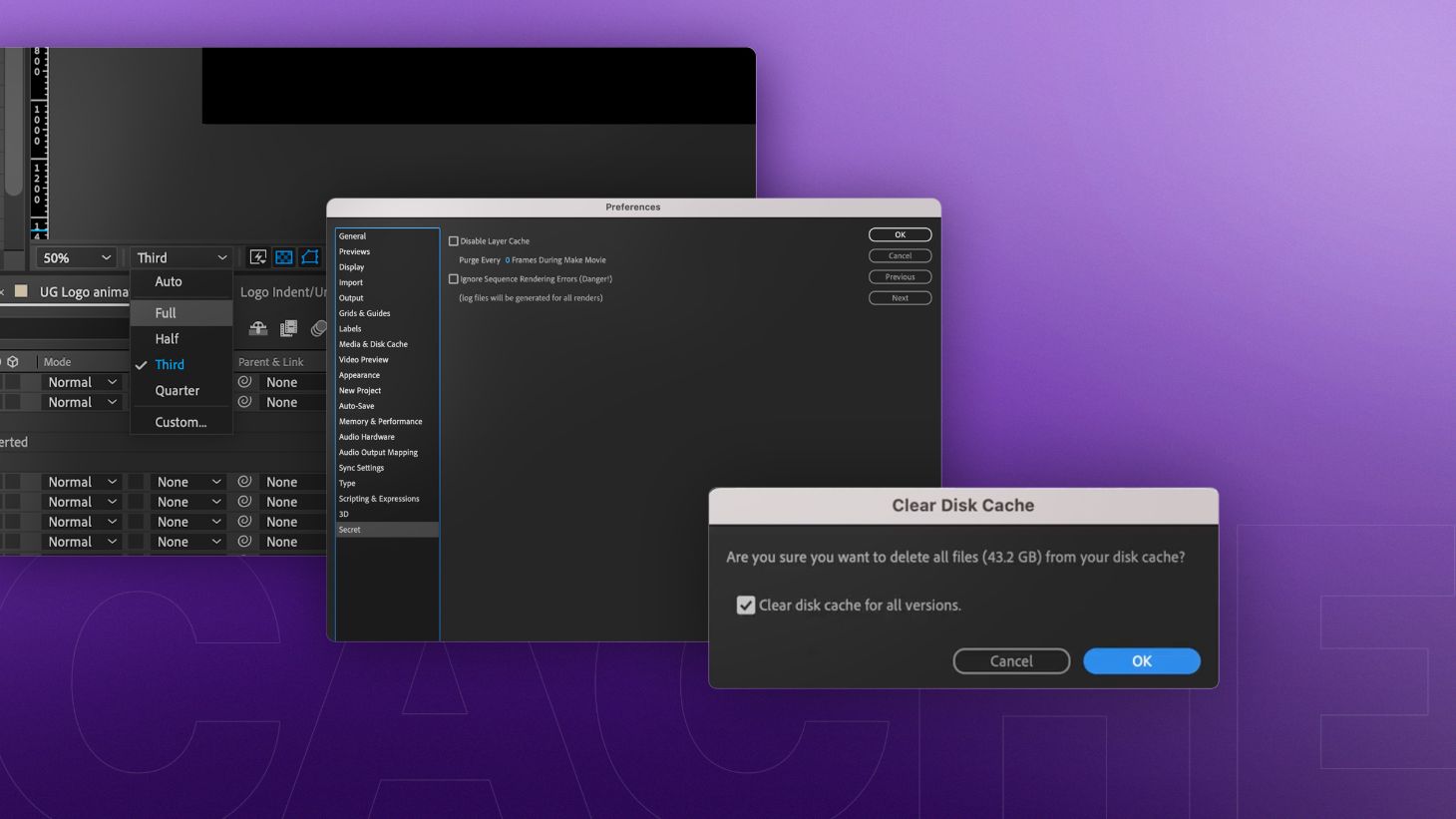

By default, the After Effects disk cache folder is located in your system drive.Ībove is a very brief introduction only to have a basic idea of how disk cache works in After Effects. This is how the size of the cache folder increases and decreases the space on your hard drive. If you are working on a complex project, you might have seen this blue colored bars which already cached into the disk drive.

You will notice some green color and blue color bars in your timeline where green colored portions are saved in the RAM and blue colored portions are saved in the disk cache. After the RAM preview completes, that specific animated sequence will become a virtually reusable sequence. Also, this process might take a while to save the information in RAM and a particular cache folder. After running a RAM preview, we can able to see a preview of the outcome in real time. For example, let’s consider we have 60 seconds of an animated project. I am sure that you are already familiar with After Effect RAM preview method, which gives a preview of what we have designed so far. After exceeding the limit of the created RAM pool, it will try to increase the size by using the disk cache. We will discuss more about RAM in After Effects in future articles. That is why many of Adobe softwares are always creating a RAM pool from the main memory once it opened. As we know, the size of the RAM is a significant factor to improve the performance in After Effects because video decoding can be quickly done in a large pool of RAM. The same technique has been used in After Effects to increase the performance of the software.

It can be used to have a high-speed data read/ write rate. But simply saying, this is a technique which is used to access data between Random Access Memory (RAM) and HDD, where the currently using data in the RAM and the disk cache hold the data which has been recently read by the RAM.


 0 kommentar(er)
0 kommentar(er)
